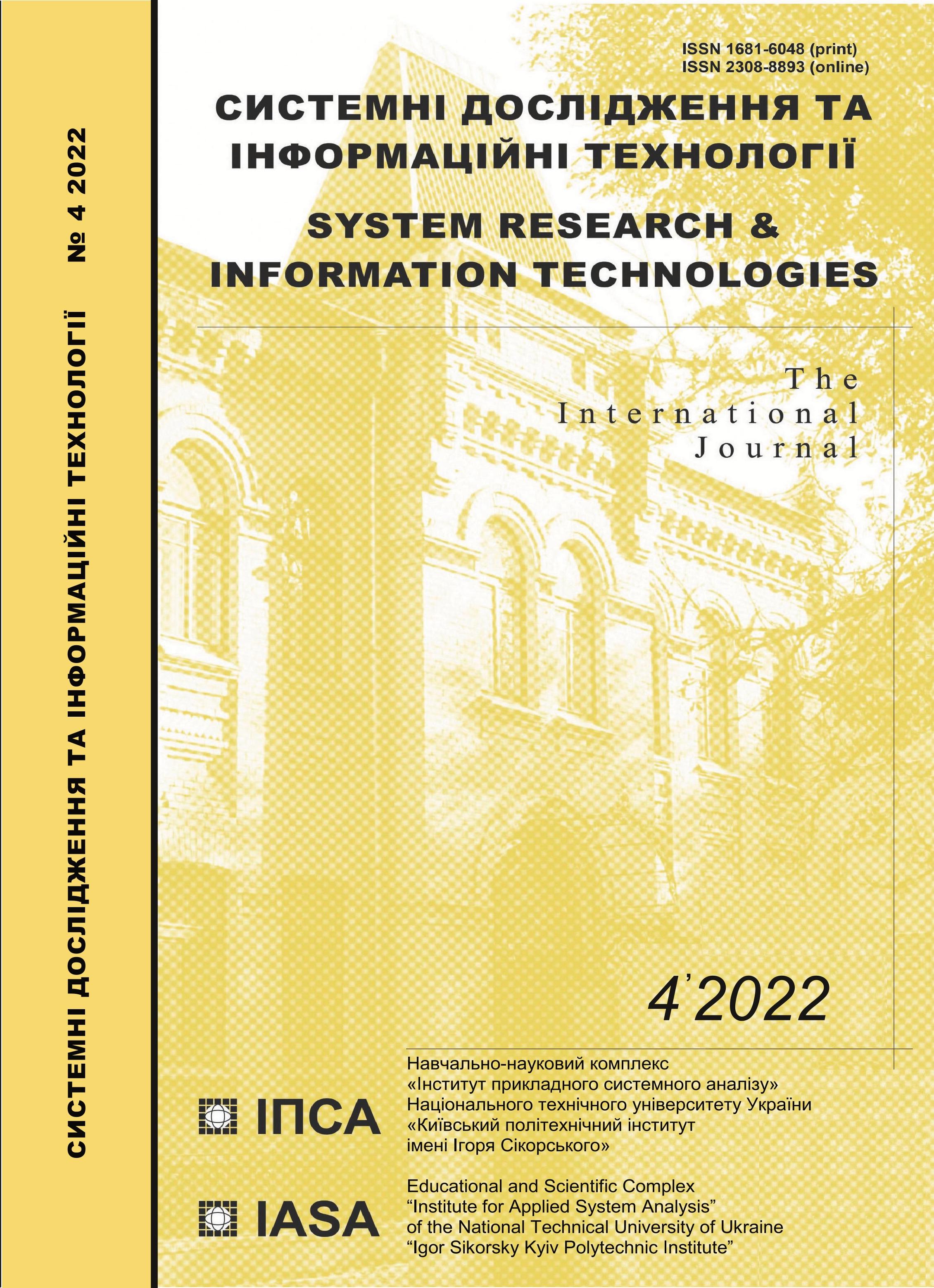Application of beam theory for the construction of twice differentiable closed contours based on discrete noisy points
DOI:
https://doi.org/10.20535/SRIT.2308-8893.2022.4.10Keywords:
spline, elastic beam, spring support, closed contour, imaginary point, noisy dataAbstract
The smoothing of measured noisy positions of discrete points has considerable significance in various industries and computer graphic applications. The idea of work consists of the employment of the technique of beam with spring supports. The local coordinates systems are established for beam straight line segments, where the initial angles between them are accounted for in the conjugation equations, which provide the angular continuity. The notions of imaginary points are introduced, the purpose of which is to approach the real length of the smoothed contour to the length of the straight chord. Several examples of closed denoised curve reconstruction from an unstructured and highly noisy 2D point cloud are presented.
References
D.F. Rogers, An Introduction to NURBS With Historical Perspective. San Diego, CA: Academic Press, 2001.
Mark S. Nixon and Alberto S. Aguado, Feature Extraction & Image Processing for Computer Vision. Academic Press, 2013, 609 p. doi. 10.1016/C2011-0-06935-1.
T. Strutz, Data Fitting and Uncertainty: A Practical Introduction to Weighted Least Squares and Beyond. Wiesbaden, Germany: Vieweg, 2010.
Stefan Ohrhallinger and Michael Wimmer, “StretchDenoise: Parametric Curve Reconstruction with Guarantees by Separating Connectivity from Residual Uncertainty of Samples,” PG '18: Proceedings of the 26th Pacific Conference on Computer Graphics and Applications: Short Papers, October 2018, pp. 1–4. Available: https://doi.org/10.2312/pg.20181266
Ahlberg J. Harold, Edwin Norman Nilson, and Joseph Leonard Walsh, “The theory of splines and their applications,” Mathematics in Science and Engineering, 1967.
Stephen P. Timoshenko, Strength of materials. Part 1: Elementary theory and problems, 1955.
D.G. Schweikert, “An interpolating curve using a spline in tension,” J. Math. Physics, 45, pp. 312–317, 1966.
P.H. Wagner, X. Luo, and K.A. Stelson, “Smoothing curvature and torsion with spring splines,” Computer-Aided Design, vol.27, no. 8, pp. 615–626, 1995. doi: 10.1016/0010-4485(95)99798-D.
I. Orynyak, I. Lokhman, and A. Bohdan, “The Spring Splines Procedure with Prescribed Accuracy for Determination of the Global (Pipe Centerline) as well as the Local (Dent) Curvatures,” Proceedings of IPC 2012 9th International Pipeline Conference, September 24–28, Calgary, Alberta, Canada, IPC2012-90127. doi: 10.1115/IPC2012-90127.
I.V. Orynyak, I.V. Lokhman, and A.V. Bogdan, “Determination of curve characteristics by its discrete points measured with an error and its application to stress analysis for buried pipeline,” Strength of Materials, 44(3), pp. 268–284, 2012. doi: 10.1007/s11223-012-9380-7.
M.A. Crisfield, “A consistent co-rotational formulation for non-linear, three-dimensional, beam-elements,” Computer Methods in Applied Mechanics and Engineering, vol. 81, issue 2, pp. 131–150, 1990. doi: 10.1016/0045-7825(90)90106-V.
I. Orynyak, R. Mazuryk, and A. Orynyak, “Basic (discontinuous) and smoothing up (conjugated) solutions in transfer matrix method for static geometrically nonlinear beam and cable in plane,” Journal of Engineering Mechanics, 146(5), 2020. doi: 10.1061/(ASCE)EM.1943-7889.0001753.

